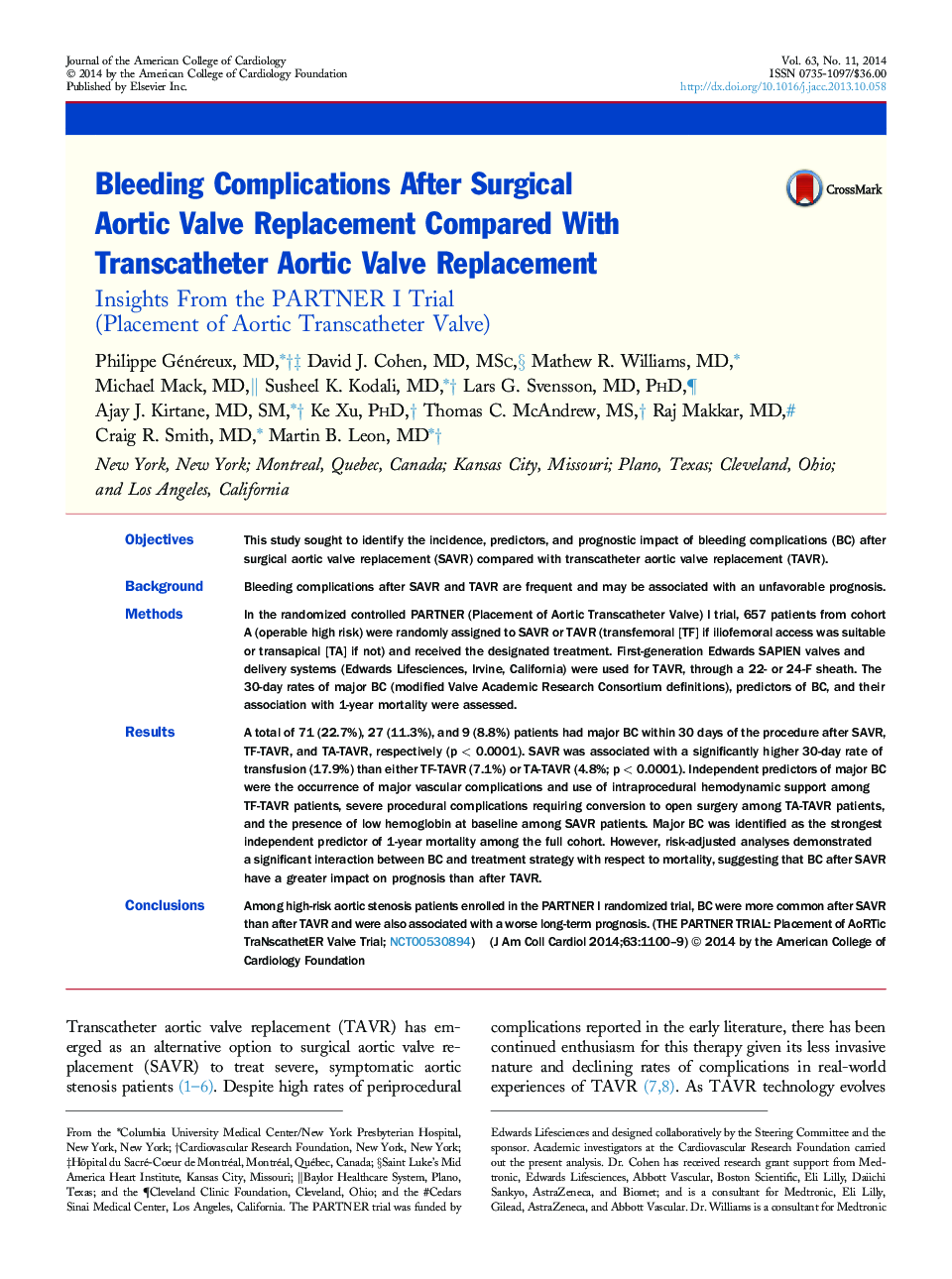| کد مقاله | کد نشریه | سال انتشار | مقاله انگلیسی | نسخه تمام متن |
|---|---|---|---|---|
| 2945885 | 1577113 | 2014 | 10 صفحه PDF | دانلود رایگان |

ObjectivesThis study sought to identify the incidence, predictors, and prognostic impact of bleeding complications (BC) after surgical aortic valve replacement (SAVR) compared with transcatheter aortic valve replacement (TAVR).BackgroundBleeding complications after SAVR and TAVR are frequent and may be associated with an unfavorable prognosis.MethodsIn the randomized controlled PARTNER (Placement of Aortic Transcatheter Valve) I trial, 657 patients from cohort A (operable high risk) were randomly assigned to SAVR or TAVR (transfemoral [TF] if iliofemoral access was suitable or transapical [TA] if not) and received the designated treatment. First-generation Edwards SAPIEN valves and delivery systems (Edwards Lifesciences, Irvine, California) were used for TAVR, through a 22- or 24-F sheath. The 30-day rates of major BC (modified Valve Academic Research Consortium definitions), predictors of BC, and their association with 1-year mortality were assessed.ResultsA total of 71 (22.7%), 27 (11.3%), and 9 (8.8%) patients had major BC within 30 days of the procedure after SAVR, TF-TAVR, and TA-TAVR, respectively (p < 0.0001). SAVR was associated with a significantly higher 30-day rate of transfusion (17.9%) than either TF-TAVR (7.1%) or TA-TAVR (4.8%; p < 0.0001). Independent predictors of major BC were the occurrence of major vascular complications and use of intraprocedural hemodynamic support among TF-TAVR patients, severe procedural complications requiring conversion to open surgery among TA-TAVR patients, and the presence of low hemoglobin at baseline among SAVR patients. Major BC was identified as the strongest independent predictor of 1-year mortality among the full cohort. However, risk-adjusted analyses demonstrated a significant interaction between BC and treatment strategy with respect to mortality, suggesting that BC after SAVR have a greater impact on prognosis than after TAVR.ConclusionsAmong high-risk aortic stenosis patients enrolled in the PARTNER I randomized trial, BC were more common after SAVR than after TAVR and were also associated with a worse long-term prognosis. (THE PARTNER TRIAL: Placement of AoRTic TraNscathetER Valve Trial; NCT00530894)
Journal: Journal of the American College of Cardiology - Volume 63, Issue 11, 25 March 2014, Pages 1100–1109